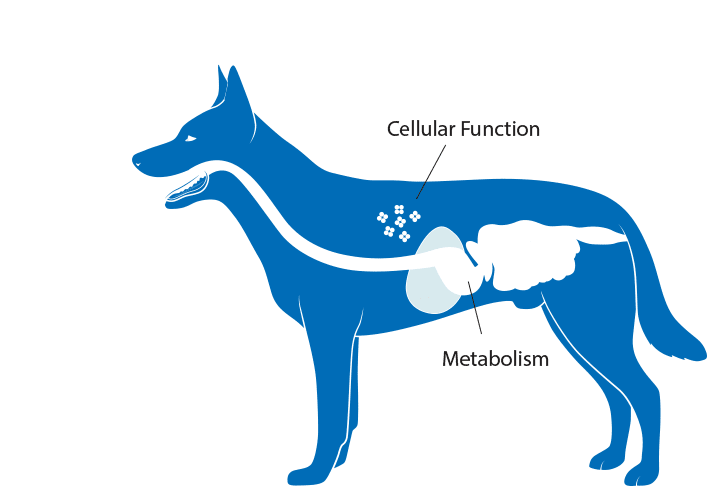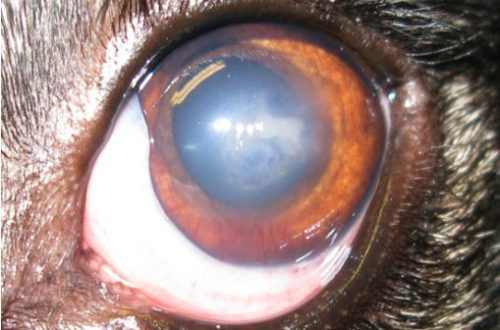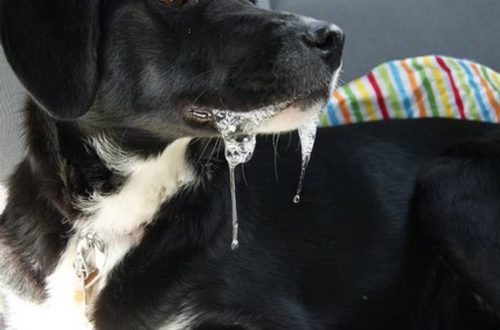
How is the metabolism in dogs
Sometimes veterinarians recommend that owners put their dog on a diet and count calories, cut out treats, and increase exercise. Despite this, the weight of the pet is growing. As with humans, a dog’s metabolism can interfere with weight loss.
What is the metabolism of dogs and how is it arranged?
Contents
metabolic process
Metabolism is the complex process of converting food into usable energy. It involves the interaction of the digestive, endocrine and nervous systems of the body and the muscles of the body. According to Discover Magazine, between 5 and 15% of the energy a person expends each day is spent digesting the food they have just eaten.
Metabolism and energy in dogs is arranged in exactly the same way. When a pet sleeps, its body needs energy to maintain its ability to breathe, pump blood, and digest food.
The number of calories needed to provide all of these background functions is called the basal metabolic rate, or resting energy requirement. With the addition of physical activity, the body’s need for calories increases.

Metabolic changes in dogs with age
There are many factors that can affect a dog’s metabolism. As animals age, there is usually a gradual loss of muscle mass. If an older dog has osteoarthritis that makes it difficult for them to walk or run, their activity levels decrease, which can also contribute to muscle loss. Muscles are one of the main factors influencing metabolism – healthy and strong muscles are necessary to maintain a normal metabolic rate. An older dog burns fewer calories, so it’s easier for her to gain weight.
While obesity does not in itself slow down metabolism in dogs, the condition is a serious problem. According to the Association for the Prevention of Obesity in Pets, 56% of dogs in the world are overweight. Obesity combined with loss of muscle mass can lead to decreased metabolic rate and metabolic disorders in dogs requiring veterinary care.
Other factors
Metabolic diseases in dogs can be triggered by hormonal disorders. Cushing’s disease affects the pituitary and adrenal glands and causes an increase in the hormone cortisol. Dogs with Cushing’s disease tend to have an increased appetite and a slower metabolism, making it difficult to lose weight without treatment.
Hypothyroidism is another hormonal disease that reduces the metabolic rate. Like animals with Cushing’s disease, dogs with hypothyroidism tend to be overweight. However, pets with hypothyroidism often gain weight even with normal or reduced appetite.
Just like in humans, in dogs, genetics also play a role in the overall metabolic rate. Animals that are predisposed to slower metabolisms find it harder to burn the calories they consume. This means treats and leftovers from the shared table can contribute to weight gain and lead to a host of other health problems for your pet. The metabolic rate can be passed on to the dog from the parents, as can genetic diseases. Genetics is also a significant factor in conjunction with the dog’s breed. It is important to talk to your veterinarian to find out what is considered normal weight for a pet, as well as how to maintain it and how to normalize metabolism.

The role of nutrition in protein-fat metabolism in dogs
Older dogs, overweight dogs, and dogs with hormonal imbalances that affect metabolism can benefit from a personalized diet. It may include special food for animals with metabolic disorders.
A diet low in calories and high in fiber can help boost your metabolism. Reducing your calorie intake is really important, but the changes you make to your diet should be moderate and safe. This requires consultation with a veterinarian. If the dog’s body “decides” that it is starving, it will go into “emergency” mode. A starving body conserves energy by lowering the metabolic rate and breaking down muscle tissue for energy. This is the complete opposite of effective weight control.
Your veterinarian will determine the daily calorie intake that your dog needs to provide to speed up his metabolism and help him lose weight. In addition to the problems associated with such an “emergency” fasting mode, everyone knows how an annoyingly hungry dog can beg for food, search for snacks on the table and generally drive owners crazy. In this case, proper nutrition in combination with regular physical activity is important for the normalization of the pet’s metabolism.
If the owners have tried all approaches to organizing exercise and carefully control portions, but the dog still cannot lose weight, you need to talk with a doctor about a medicated food. Such products are specially designed to optimize metabolism and maintain a normal weight in a pet.
A dog’s normal weight, which can be greatly influenced by metabolism, is one of the most important factors in determining the length and quality of its life. You can ensure your pet has a healthy metabolism through proper nutrition, exercise, and regular check-ups with the veterinarian. If you think your dog has a slow metabolism, make an appointment with your veterinarian to discuss ways to normalize it. Your doctor can help identify any conditions that may be interfering with your dog’s weight loss efforts and advise on the best weight management regimen.
See also:
Indigestion
Causes of digestive problems in dogs
Gastrointestinal pathologies and indigestion in dogs: types and causes
The digestive system of dogs and cats: how to feed a pet so that he does not have a stomach ache





